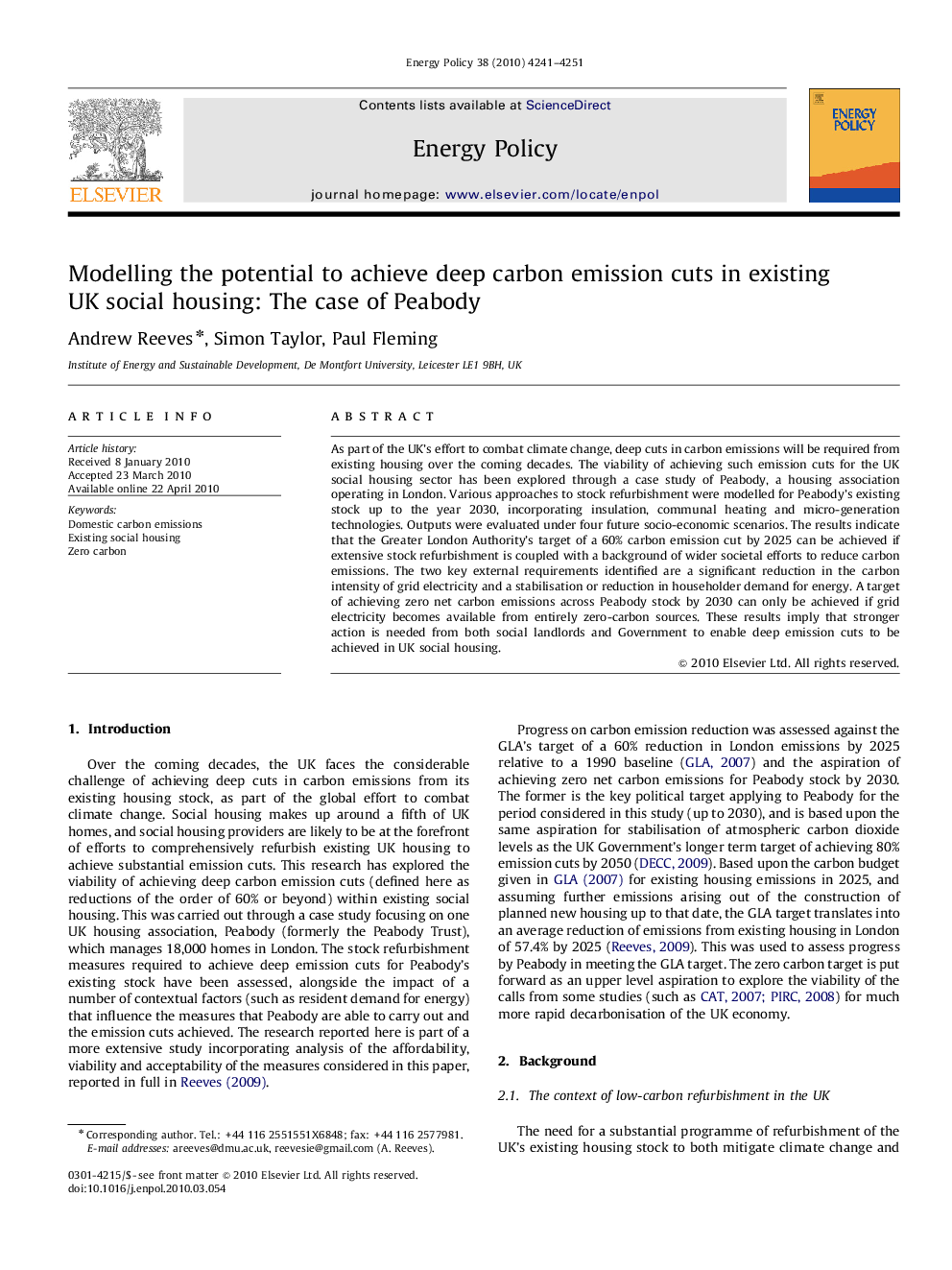| Article ID | Journal | Published Year | Pages | File Type |
|---|---|---|---|---|
| 996116 | Energy Policy | 2010 | 11 Pages |
As part of the UK’s effort to combat climate change, deep cuts in carbon emissions will be required from existing housing over the coming decades. The viability of achieving such emission cuts for the UK social housing sector has been explored through a case study of Peabody, a housing association operating in London. Various approaches to stock refurbishment were modelled for Peabody’s existing stock up to the year 2030, incorporating insulation, communal heating and micro-generation technologies. Outputs were evaluated under four future socio-economic scenarios. The results indicate that the Greater London Authority’s target of a 60% carbon emission cut by 2025 can be achieved if extensive stock refurbishment is coupled with a background of wider societal efforts to reduce carbon emissions. The two key external requirements identified are a significant reduction in the carbon intensity of grid electricity and a stabilisation or reduction in householder demand for energy. A target of achieving zero net carbon emissions across Peabody stock by 2030 can only be achieved if grid electricity becomes available from entirely zero-carbon sources. These results imply that stronger action is needed from both social landlords and Government to enable deep emission cuts to be achieved in UK social housing.
